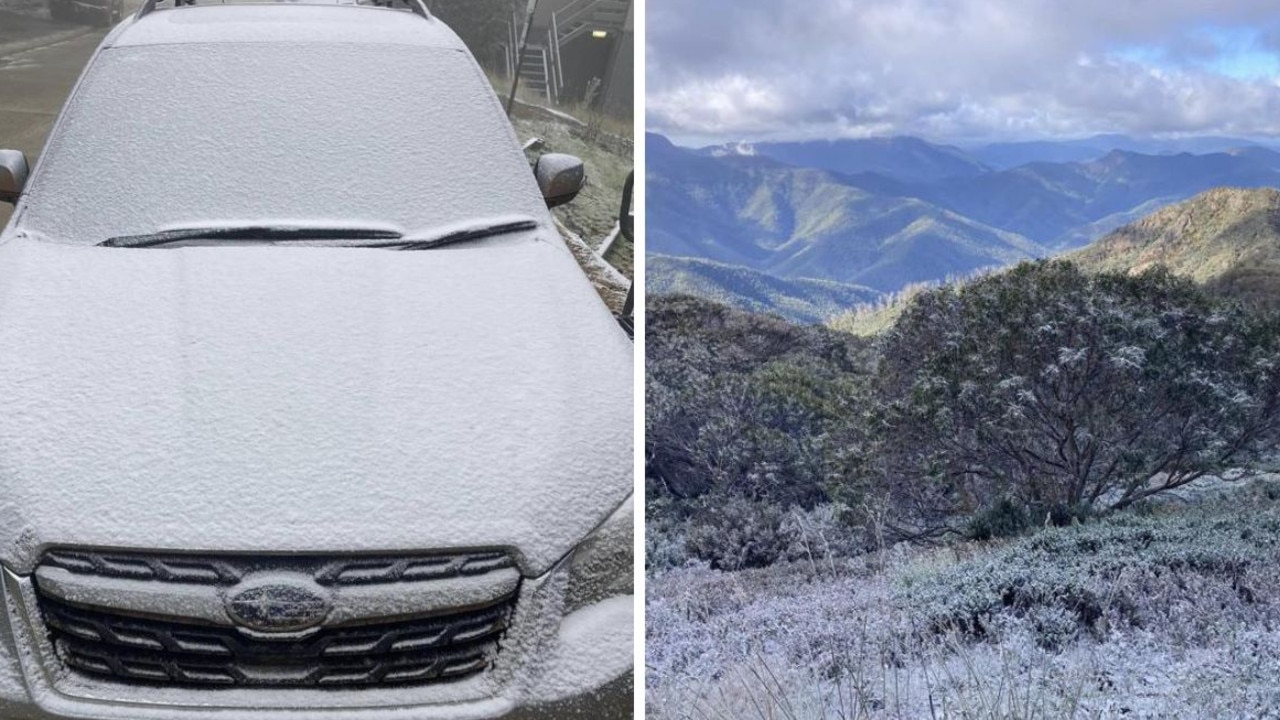Cooler than Tasmania: Australia’s east coast shivers through record-breaking temperatures
Australians have received an early taste of winter, with parts of the country shivering through lows that haven’t been seen for at least 20 years.

Environment
Don't miss out on the headlines from Environment. Followed categories will be added to My News.
Residents in southern Queensland have shivered through brutally cold temperatures over the weekend, with some areas breaking historical records for the coldest May day.
A cold front sweeping eastern Australia has left behind a “deep dry, cold air mass” in the northern tropics.
This paired with a large high has resulted in warmer days and freezing nights for parts of Queensland, causing the winter weather to arrive a little earlier than usual.
In the Darling Downs on Sunday, Warwick, about 150km southwest of Brisbane, experienced a low of -1.6C, while Oakey, near Toowoomba, was 0.3 degrees cooler according to the Bureau of Meteorology (BOM).
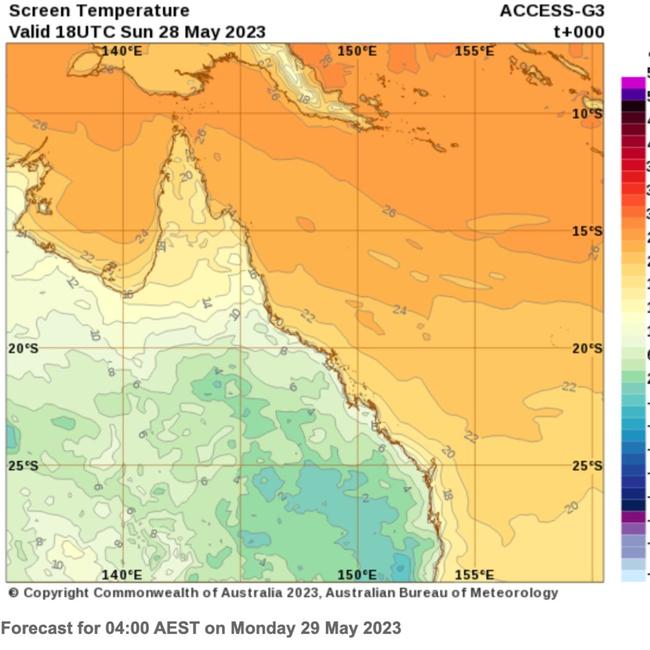
Meanwhile Kingaroy, 200km northwest of Brisbane, reached a low of -0.4C.
Camooweal, near the Queensland-Northern Territory border west of Mount Isa, recorded 1.7C on Sunday morning, the coolest May temperature since May 30, 1974.
The Whitsunday rural town of Proserpine also recorded its lowest minimum for the month in more than three decades, matching May 2015’s record of 4.9C.
The chilly weather continued into Monday morning where more May records were broken, leading to the coolest mornings in decades for some parts of the state.
Maryborough, in the Fraser Coast region, experienced a low of 1.9C – 0.3 degrees below the lowest temperature to be recorded for the month since May 17, 1960.
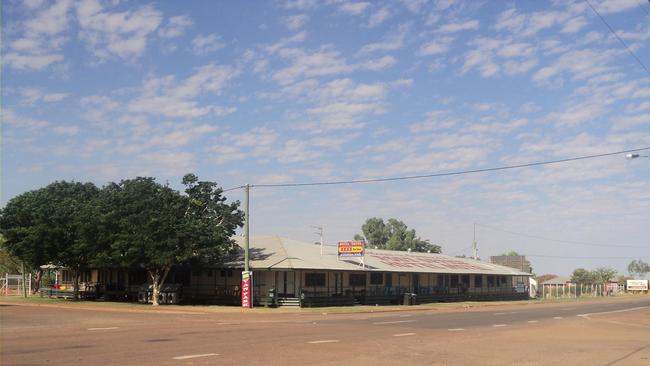
Hughenden marked a 23-year record on Monday morning, reaching a low of 0.8C at about 6.50am.
However locals would have found it much cooler, with wintry winds causing temperatures to feel as much as four degrees cooler.
“There has been wind chill in some areas with the southerly winds, which has made those minimum temperatures feel even cooler in some places,” BOM meteorologist Steve Hadley told news.com.au.
In fact, Warwick felt more like -4.7C than its recorded temperature of -1.3C, while Dalby, which recorded a low of -0.5C felt more like -4.2C on Monday.
Similar temperatures were felt in Oakey, Toowoomba and Charleville, ranging between -0.9C and 0.5C.
A cold start to Sunday with widespread frost areas. Some places saw their coldest May morning on record including: 0.7ºC at Bankstown, -4.8ºC at Tamworth, 3.5ºC at Williamson, 1.4ºC at Hughenden. 📷credit: Lynette Joy Foody, Uralla - NSW For more info: https://t.co/ifYCtuG7uTpic.twitter.com/ZlzZ6A8VRm
— Bureau of Meteorology, Australia (@BOM_au) May 27, 2023
Winter chill felt right across the country
Residents in South East Queensland and Central Queensland also had to reach for their winter warmers early, with some suburbs hitting negative temperatures.
Clermont felt like -3.2C despite recording a temperature of -0.1C, while Rolleston Airport woke up to temperatures of 2.2C.
The cold weather was also felt further south along the east coast, with Tamworth in NSW dropping to a low of almost -5C.
Meanwhile on Saturday, records were broken at Sydney’s Observatory Hill, with it being the coldest May morning in 24 years at 6.9C.
Bega also reached a low of -1.6C, the lowest in 15 years.
In addition to the cool weather, the weekend’s cold front brought frost to sections of the east coast, the Red Centre and southern parts of Western Australia.
“Frost is still likely in parts of southern Queensland on Tuesday and Wednesday mornings, but by Thursday, nights won’t be quite as chilly across Queensland as a warmer air mass starts to move in,” Sky News meteorologist Rob Sharpe said.
Often #Tasmania gets a bad rap for being colder than the rest of Australia. But if you look at minimum temperatures this morning, #Hobart, #Launceston and #Devonport (10 °C) were warmer than many of the capital cities further north, including Sydney, Brisbane, Perth and Canberra! pic.twitter.com/K64ImOzhdl
— Bureau of Meteorology, Tasmania (@BOM_Tas) May 28, 2023
In some good weather news, the cold snap along Australia’s east coast gave Tasmanians a reason to celebrate with minimum temperatures in parts of Hobart warmer than its mainland counterparts.
“Often Tasmania gets a bad rap for being colder than the rest of Australia,” the BOM for Tasmania tweeted on Sunday.
“But if you look at minimum temperatures this morning, Hobart, Launceston and Devonport (10C) were warmer than many of the capital cities further north, including Sydney, Brisbane, Perth and Canberra!”
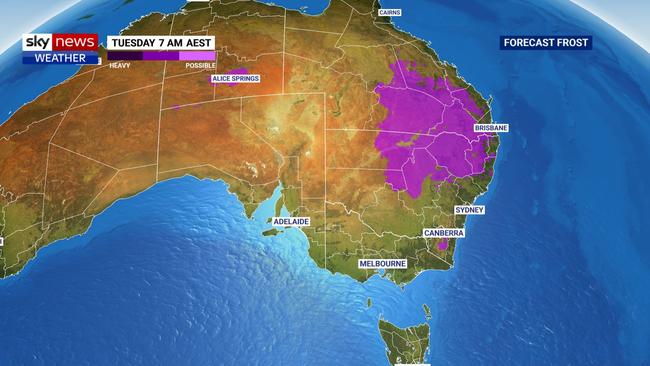
The week ahead
Looking ahead, a high pressure system pushing eastwards is anticipated to thaw frost from midweek, thanks to northerly, anticlockwise winds.
“As we head towards the end of the week, humidity will start to rise a bit with extra cloud cover and the potential for showers,” Mr Sharpe said.
But as the east coast steps into the official winter season, the rainfall is set to continue particularly in Queensland and NSW.
“There is a good chance for wet weather over large parts of both states, with the heaviest and most consistent wet weather on the east coast and ranges, but some for the inland too,” Mr Sharpe said.
“It’s early days in the forecast, but it’s a system to watch.”
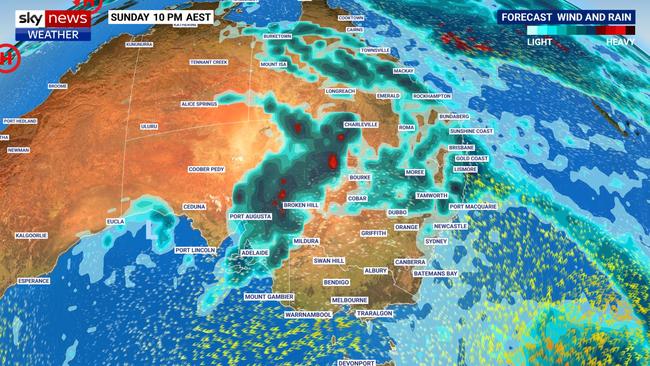
Australia’s winter season officially kicks off on Thursday, with the BOM forecasting light winds and sunshine for Brisbane, with a high of at least 25C.
Sydney is predicted to experience temperatures in the 20s, with the week expected to be partly cloudy with a slight chance of showers.
It’s possible Melbourne and Canberra will soak up temperatures in the high teens while Adelaide and Perth will endure similar weather to Sydney.
Darwin is expected to experience its usual summer-like temperatures, with forecasts predicting a maximum of 31C on Friday and a low of 18C between now and Thursday.
Meanwhile Hobart will be back as the coolest capital in Australia, with expected maximum temperatures ranging between 13C and 17C during the week.
Originally published as Cooler than Tasmania: Australia’s east coast shivers through record-breaking temperatures





